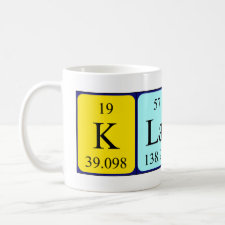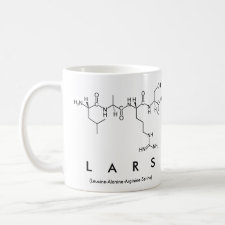
Authors: Andersson LI, Mosbach K
Article Title: Enantiomeric resolution on molecularly imprinted polymers prepared with only noncovalent and nonionic interactions.
Publication date: 1990
Journal: Journal of Chromatography A
Volume: 516
Issue: (2)
Page numbers: 313-322.
DOI: 10.1016/S0021-9673(01)89273-6
Abstract: Molecular imprints were prepared utilizing only weak bonds between the print molecule and functional monomers; the bonding forces used in the imprinting process were only those weaker than covalent and ionic bonds. Methacrylate-based molecular imprints were prepared using a number of chiral compounds, including N-protected amino acid derivatives, as print molecules. Methacrylic acid was used as the functional monomer because the acid function of the monomer forms hydrogen bonds with a variety of polar functionalities, such as carboxylic acids, carbamates, heteroatoms and carboxylic esters, of the print molecule. Bulk polymers were prepared, ground and sieved to particles of size <25 mm, packed into high-performance liquid chromatographic (HPLC) columns and used for enantiomeric separations in the HPLC mode. The polymers were shown to effect efficient enantiomeric resolution of a racemate of the print molecule in addition to substrate selectivity for the print molecule in a mixture of substrates with very similar structures. For example, the enantiomers of Cbz-aspartic acid and Cbz-glutamic acid (Cbz = carbobenzoxy) were resolved with separation factors of 1.9 and 2.5, respectively, on polymers with molecular imprints of the L-form of the respective compounds. In addition, these polymers, prepared against Cbz-L-aspartic acid and Cbz-L-glutamic acid, respectively, had the ability to bind selectively the print molecule from a mixture of both racemates, although the two compounds differ only by one methylene group. The results presented represent a substantial widening of the scope of molecular imprinting in that it may now be possible to prepare molecular imprints against a very large number of compounds.
Template and target information: CBZ-L-glutamic acid, CBZ-L-aspartic acid, CBZ-L-tryptophan, Boc-L-tryptophan, Boc-L-Phenylalanine, mandelic acid, Boc-L-proline N-hydroxysuccinamidyl ester, CBZ-L-tryptophan methyl ester



Join the Society for Molecular Imprinting

New items RSS feed
Sign-up for e-mail updates:
Choose between receiving an occasional newsletter or more frequent e-mail alerts.
Click here to go to the sign-up page.
Is your name elemental or peptidic? Enter your name and find out by clicking either of the buttons below!
Other products you may like:
 MIPdatabase
MIPdatabase









